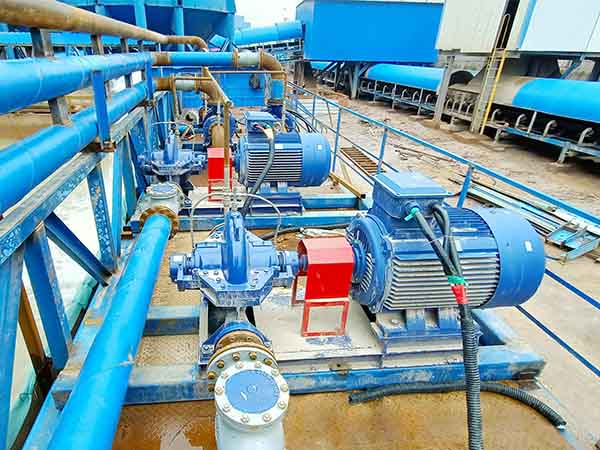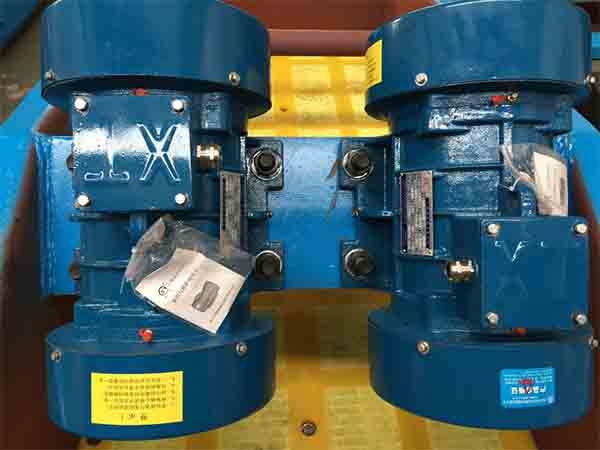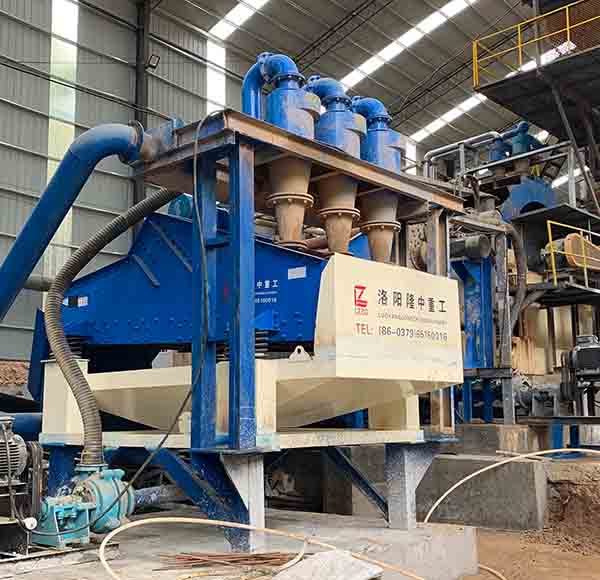Projects
-

- Sand washing machine with hydrocyclone for sale
The cyclone technology is adopted...
-

- How to choose vibrating screen panels ?
The application of vibrating screens...
-

- The Sand Pump Types
The sand pump is a device that increases the energy...
-

- What Is The Reason For The Broken Shaft Of The Motor?
The function of the vibrating motor is to...
How to Adjust The Sand Discharge Condition of The Hydrocyclone?
Date: 2021-11-06 From: Longding Author: admin
The concentration and fineness of the sedimentation should be detected in time to adjust the condition of the sedimentation and discharge of the hydrocyclone. Fluctuations in the concentration of sedimentation or “fineness of sedimentation” should be adjusted in time. Under normal operating conditions of the cyclone, the grit discharge should be in an “umbrella shape”. If the sediment concentration is too large, the sediment will be columnar or intermittently discharged.
The working principle of hydrocyclones
At a certain speed, the ore particles are in a suspended state and enter the cyclone along the tangential direction with the slurry. After the ore slurry encounters the wall, it is forced to make a rotary motion, while the ore particles continue to move forward according to the inertia of the original linear motion. Coarse particles have greater inertia and can overcome water resistance and approach the vessel wall. The inertia of the fine particles is small, and they rotate with the slurry before reaching the wall. Therefore, the coarse particles are distributed in the outer layer and the fine particles are distributed in the inner layer. And under the action of the slurry, the fine particles are discharged from the overflow port, and the coarse particles flow out from the sedimentation port, so as to achieve the purpose of classification and concentration.
How to adjust the sand discharge condition of the cyclone?
1. The high grit concentration may be caused by the large feed slurry concentration or the too-small grit port. A proper amount of water can be added to the feeding place first. If the sediment concentration is still large, a larger grit port needs to be replaced.
2. If the sedimentation sand is discharged in an “umbrella shape”, but the sedimentation concentration is less than the required concentration for production, it may be caused by a low feed concentration. At this time, the feed concentration should be increased.
3. The reason for the “fine sand trapping” may be that the grit diameter is too large, the diameter of the overflow pipe is too small, and the pressure is too high or too low. The pressure can be adjusted first, and then a smaller standard grit port can be replaced, and normal production conditions can be tried step by step. Or check whether the grit port is worn or not, and replace the grit port.
4. If it is found that “overflow running rough”, first check whether the grit port is blocked, and then check the feed concentration, and adjust according to the specific conditions.
Leave a Message
Here you can submit any questions and we will get back to you as soon as possible. We will not disclose the information you submit to anyone, please rest assured.



Inquiry